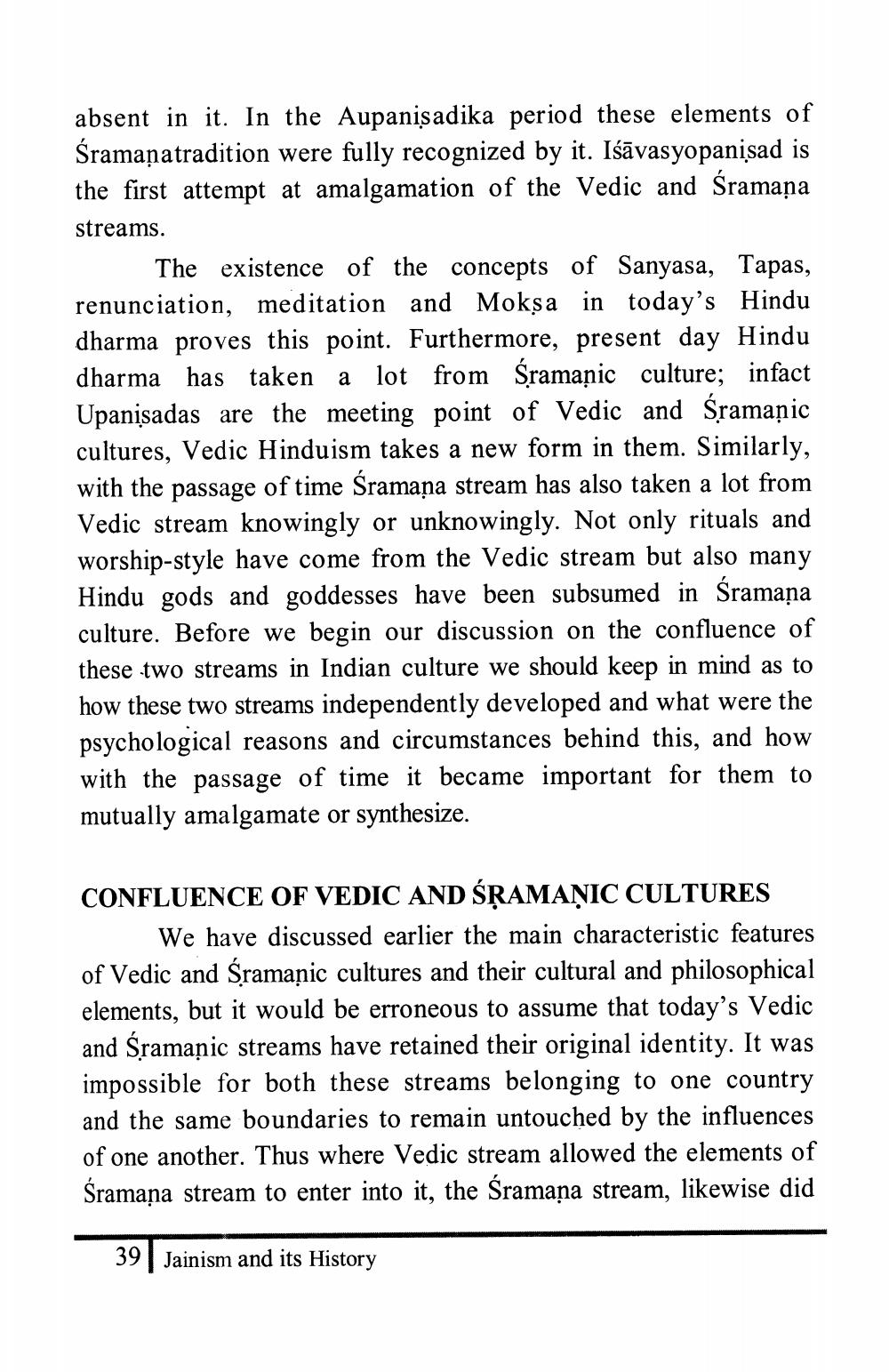________________
absent in it. In the Aupanisadika period these elements of Sramanatradition were fully recognized by it. Iśāvasyopanisad is the first attempt at amalgamation of the Vedic and Śramana streams.
The existence of the concepts of Sanyasa, Tapas, renunciation, meditation and Moksa in today's Hindu dharma proves this point. Furthermore, present day Hindu dharma has taken a lot from Sramanic culture; infact Upanisadas are the meeting point of Vedic and sramaņic cultures, Vedic Hinduism takes a new form in them. Similarly, with the passage of time Śramaņa stream has also taken a lot from Vedic stream knowingly or unknowingly. Not only rituals and worship-style have come from the Vedic stream but also many Hindu gods and goddesses have been subsumed in Sramana culture. Before we begin our discussion on the confluence of these two streams in Indian culture we should keep in mind as to how these two streams independently developed and what were the psychological reasons and circumstances behind this, and how with the passage of time it became important for them to mutually amalgamate or synthesize.
CONFLUENCE OF VEDIC AND ŚRAMANIC CULTURES
We have discussed earlier the main characteristic features of Vedic and Sramanic cultures and their cultural and philosophical elements, but it would be erroneous to assume that today's Vedic and Sramaņic streams have retained their original identity. It was impossible for both these streams belonging to one country and the same boundaries to remain untouched by the influences of one another. Thus where Vedic stream allowed the elements of Śramaņa stream to enter into it, the Śramaņa stream, likewise did
39
Jainism and its History




